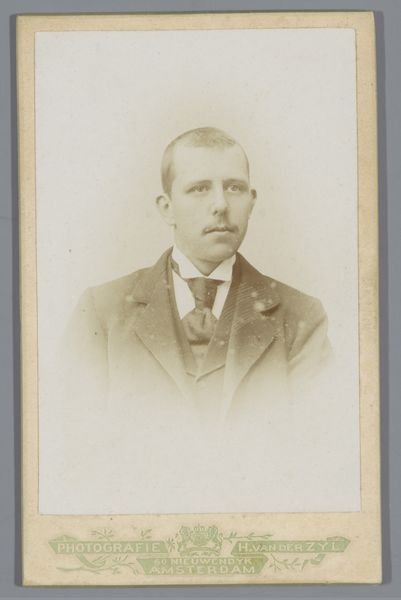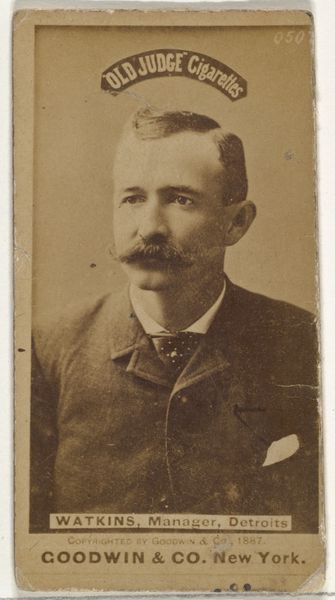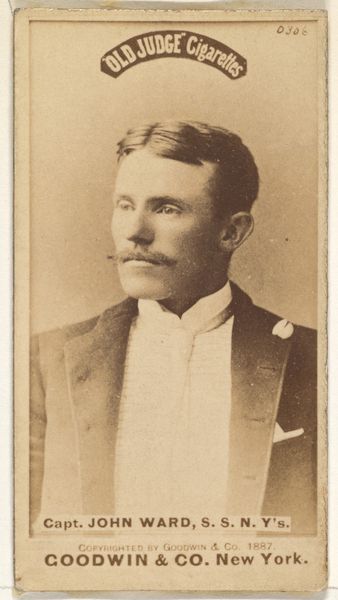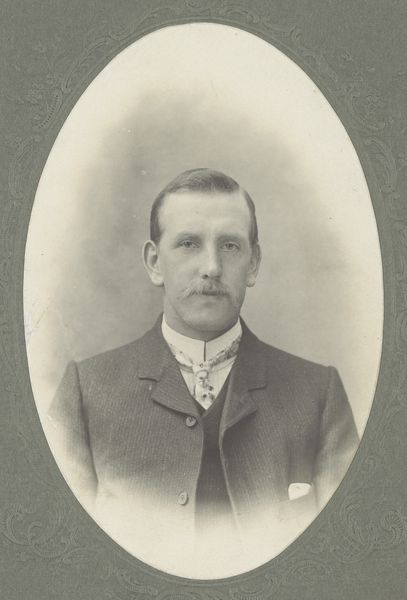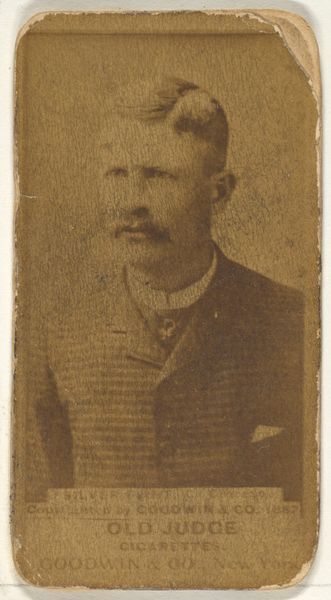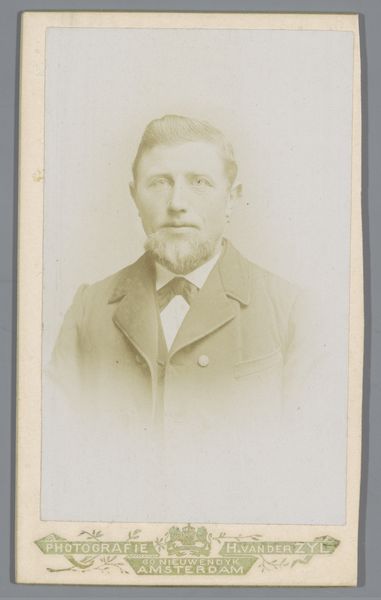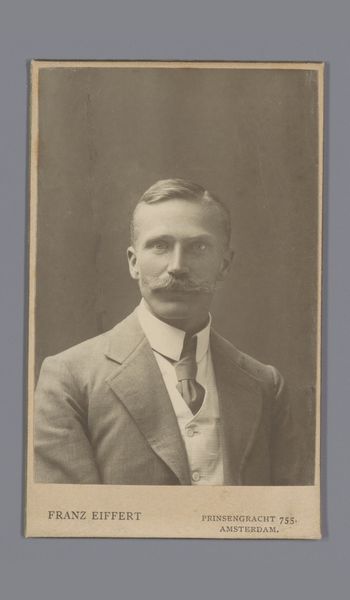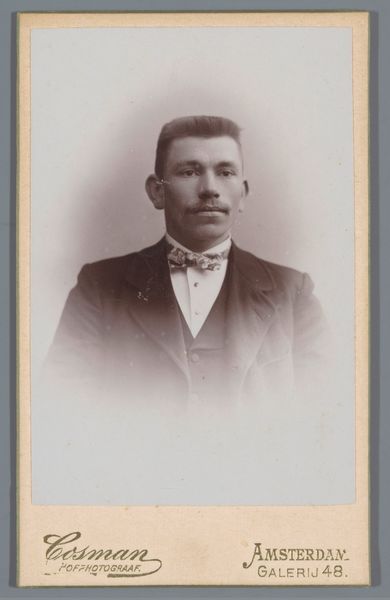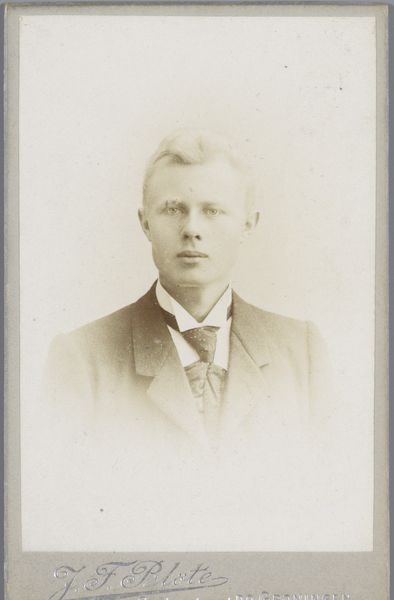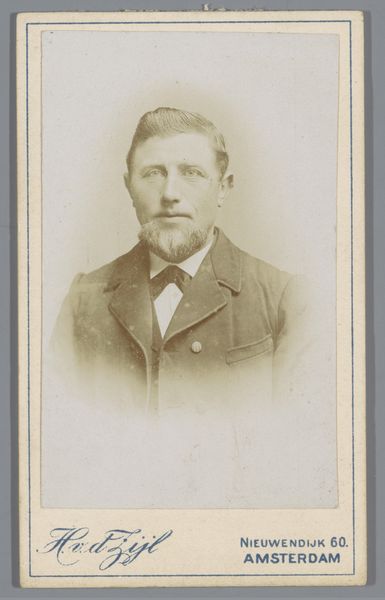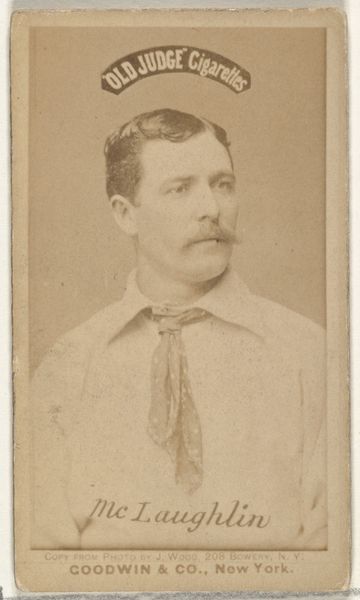
Frank Sylvester "Silver" Flint, Catcher, Chicago, from the Old Judge series (N172) for Old Judge Cigarettes 1888
0:00
0:00
print, photography
#
portrait
# print
#
impressionism
#
baseball
#
photography
#
historical photography
#
19th century
#
men
#
athlete
Dimensions: sheet: 2 11/16 x 1 3/8 in. (6.9 x 3.5 cm)
Copyright: Public Domain
Curator: What strikes you first about this Old Judge Cigarettes trading card from 1888, a portrait of Frank Sylvester “Silver” Flint? Editor: The sepia tones lend an immediate sense of nostalgia, a visual encoding of the "good old days," though I'm always wary of romanticizing history. It also has a somber quality; he's not smiling, it feels rather serious. Curator: Indeed. From a formal perspective, consider how the subject fills the frame, the symmetrical composition, anchored by his distinct mustache and the sharp lines of his patterned jacket. The geometric construction creates a rigid order, even in what appears to be a casual portrait. Editor: I see that rigidity, but it also speaks to the conventions of portraiture at the time, right? It's staged, almost performative. These cards were a form of early advertising, and Flint, like other athletes, was being sold to the public as a figure of aspiration. What was he being made to represent, I wonder? The myth of American masculinity? Curator: Perhaps, but I am captivated by the surface itself: the matte texture of the card, the slight fading and imperfections accrued over time. Each mark tells a story about the object's history and journey. The typography is also notable – how “Flint C. Chicago's” is elegantly handwritten to mirror the rigidity of the Old Judge Cigarette Factory inscription. Editor: And we must also examine the implications of its creation and distribution. These cards promoted a product – cigarettes – which, even then, had detrimental health effects. There’s a complex web of consumerism, celebrity, and potentially harmful habits being woven here. The history of the athlete is therefore inseparable from that of commercial and capitalist strategies. Curator: An astute point. Focusing on these interconnections indeed enriches the analysis. Editor: Exactly! The image's value, therefore, shifts depending on the critical lens through which we view it, acknowledging the subject within its historical setting, rather than in isolation.
Comments
No comments
Be the first to comment and join the conversation on the ultimate creative platform.
